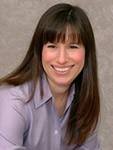The trouble with a 4,000 year old tradition is that we collect an awful lot of things: rules, traditions, theologies, etc.; but rarely if ever jettison any of the old. That is normally a very good thing- it leads to deep thought and wisdom and a myriad of possibilities on many issues. With the afterlife, though, it can be a bit of mess. That does allow Jews, though, to choose from a range of possibilities.
Judaism, first and foremost, is a religion for this life, and not the next one. Our religion and its practices focus the individual on observing laws and living ones life in a moral and intentional way in order that this life be happy and meaningful. Shabbat, prayer, mitzvot, Torah study, and ethical eating practices are all about the here and now, and are not focused on earning a reward that will be paid upon one’s demise.
However, we all die, and Jewish eschatology (end-of-days theology) does exist. As I mentioned in my introduction, though, it is a hodgepodge of years of accumulated traditions, which often do not agree with one another.
The first biblical view is mentioned in conjunction with Abraham, who tells his children he will ‘go down to Sheol’ (Genesis 37:35), some kind of subterranean netherworld, according to some biblical scholars. This is likely some kind of eternal purgatory, neither good nor bad, and does not include a return trip at any point.
The second biblical view, which you refer to in your question, is Ezekiel’s vision of the valley of dry bones, being reanimated at the end of days (Ezekiel 37:1-14). The righteous will return after death, and their bodies will be functional again. Jews today may or may not believe this, by and large. However, it is for this reason that Jewish burial organizations like ZAKA care very much that every part of a Jew is buried together in a funeral plot. Jewish mortuaries are well accustomed to preserving the limbs of amputees so that their parts may be interred together with the rest of their body: the belief is that when the righteous return to life at the end of days, the severed limb will be joined to its body. Whether the person is young and vital or old and less active, though, is not an answer or comment I have seen in Jewish sources- you are free to imagine as you wish. Although Jews put the effort into observing these rituals, it is also due to the Jewish view of ‘kavod haMet’; respect for the dead, and is also the reason why Jewish tradition requires burial, and not cremation. Therefore, the Jewish efforts in gathering all the parts of a deceased person for burial does not necessary imply that Jews are sure there will be a resurrection.
Two post-biblical views of afterlife exist as well. First, the Talmud, and subsequently the Hasidic tradition, discusses the notion of ‘Olam HaBa’ - the world to come. It is stated in the Talmud that there is some kind of heaven-like place for the righteous; for the wicked, there is nothing. Hassidic teachings about Olam HaBa make it a place of Torah learning, all the time. It is not a place where a corporeal body is needed. Second, the Kabbalistic tradition records the idea of ‘gilgul haNefesh’- reincarnation. Your soul is reborn after death into the body of another person.
Lastly, it is entirely possible that none of these is what happens when we die. The energy that is within us is recycled into the universe in some way we cannot understand. We are a part of everything, and God, forever after. This view fits nicely with a Reconstructionist view of God, if that’s your thing.
My advice, though, is to pour a nice glass of wine, enjoy your friends and family, and live a good life in the present. Those are things you can know, understand, and enjoy for certain.









